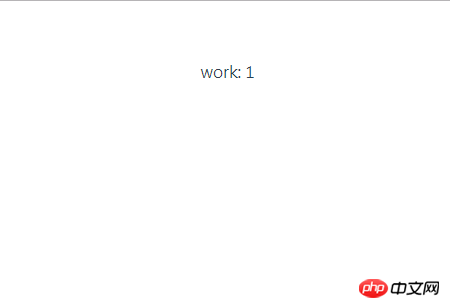
This time I will show you how to pass parameters by the router in Vue.js. What are the precautions for passing parameters by the router in Vue.js? The following is a practical case, let's take a look.
Vue-router parameter passing
Why do we need to pass parameters in the routerImagine a scenario. Currently on the homepage, you need to click on a certain item to view detailed information about the item. Then at this time, you need to pass the id of the item to the details page on the home page, and the details page can obtain the detailed information through the id.vue-router parameter passing method
Parma passing parameter
Post code:/ router/index.vueexport default new Router({
routes: [
{
path: '/',
name: 'Home',
component: Home
},
{
path: '/work',
name: 'Work',
component: Work
}
]
})// 触发它传递一个对象到组件Work
getIt (id) {
this.$router.push({
path: '/work',
name: 'Work',
params: {
id: id
}
})
}<template>
<p class="work">
work: {{id}}
</p>
</template>
<script>
export default {
name: 'Work',
data () {
return {
id: this.$route.params.id //拿到id
}
}
}
</script>

Just change the above parmas to query, that is:
// 传入
this.$router.push({
path: '/work',
name: 'Work',
query: {
id: id
}
})
... ...
this.$route.query.id // 获取The difference between parmas and query
query passes parameters through the url and is always displayed in the url
parmas transfer parameters, there will be no data after refreshing the page, and the obtained parameters cannot be saved
I believe you have mastered the method after reading the case in this article. For more exciting information, please pay attention to other related articles on the PHP Chinese website!
Recommended reading:
Angular Font-Awesome step-by-step explanationDetailed explanation of the use of classes in js and typescriptThe above is the detailed content of How to pass parameters in router in Vue.js. For more information, please follow other related articles on the PHP Chinese website!




